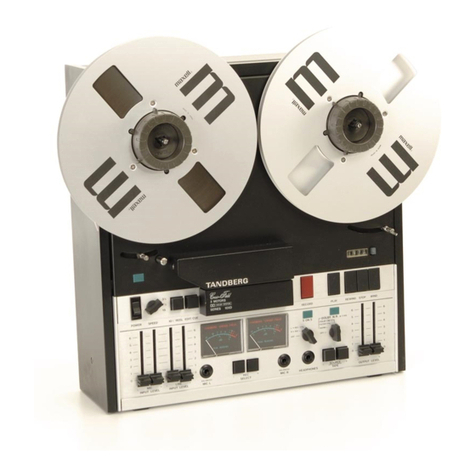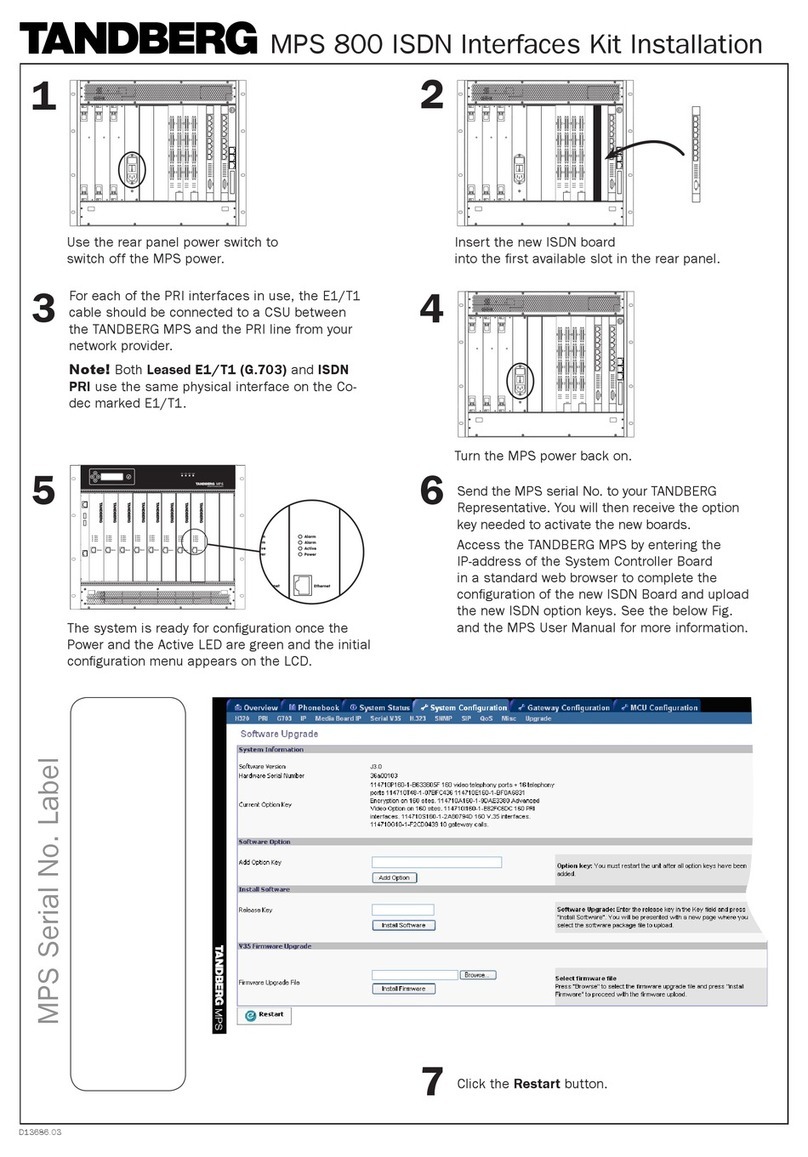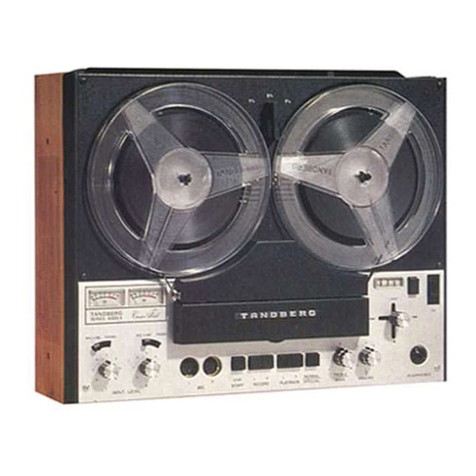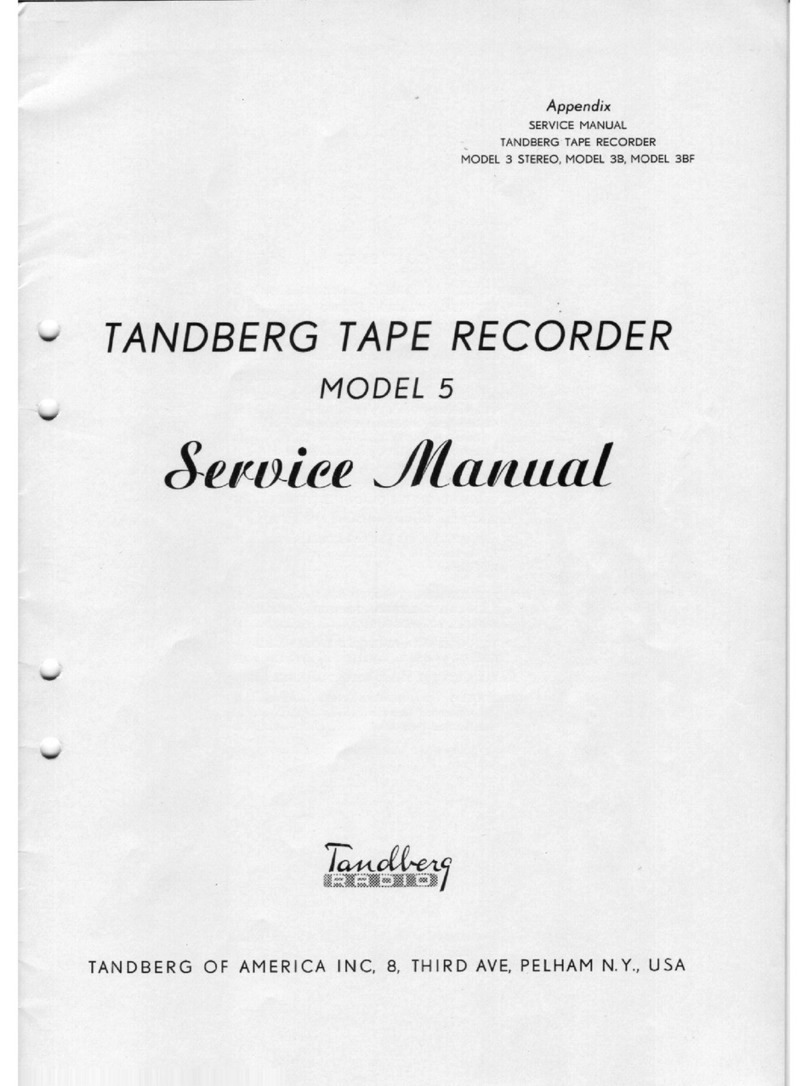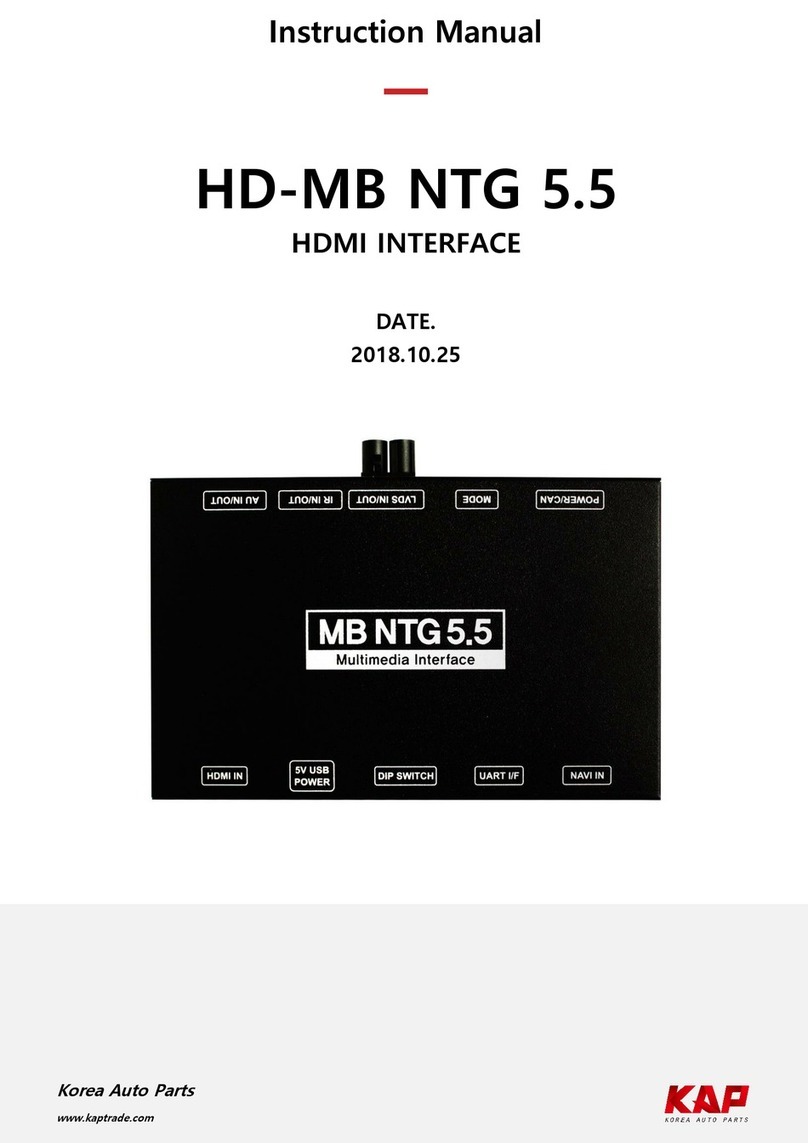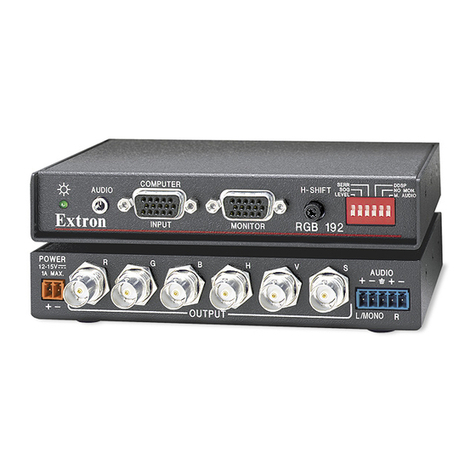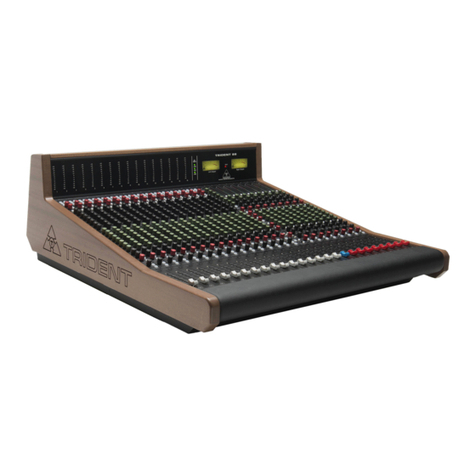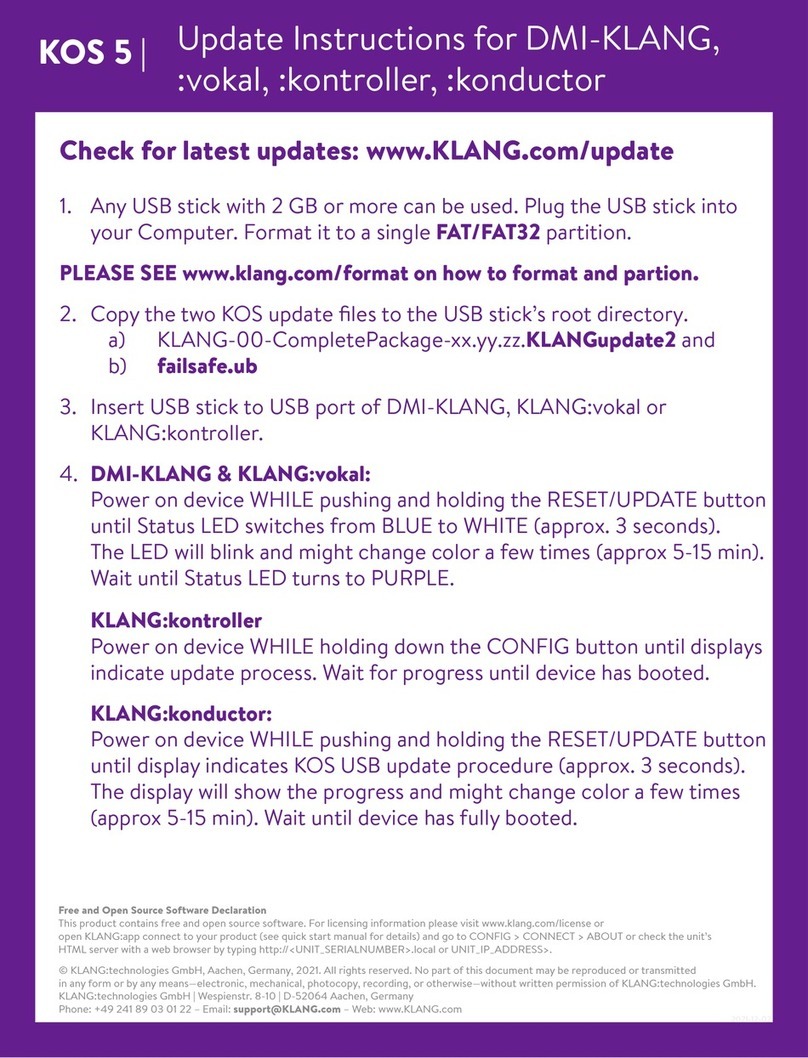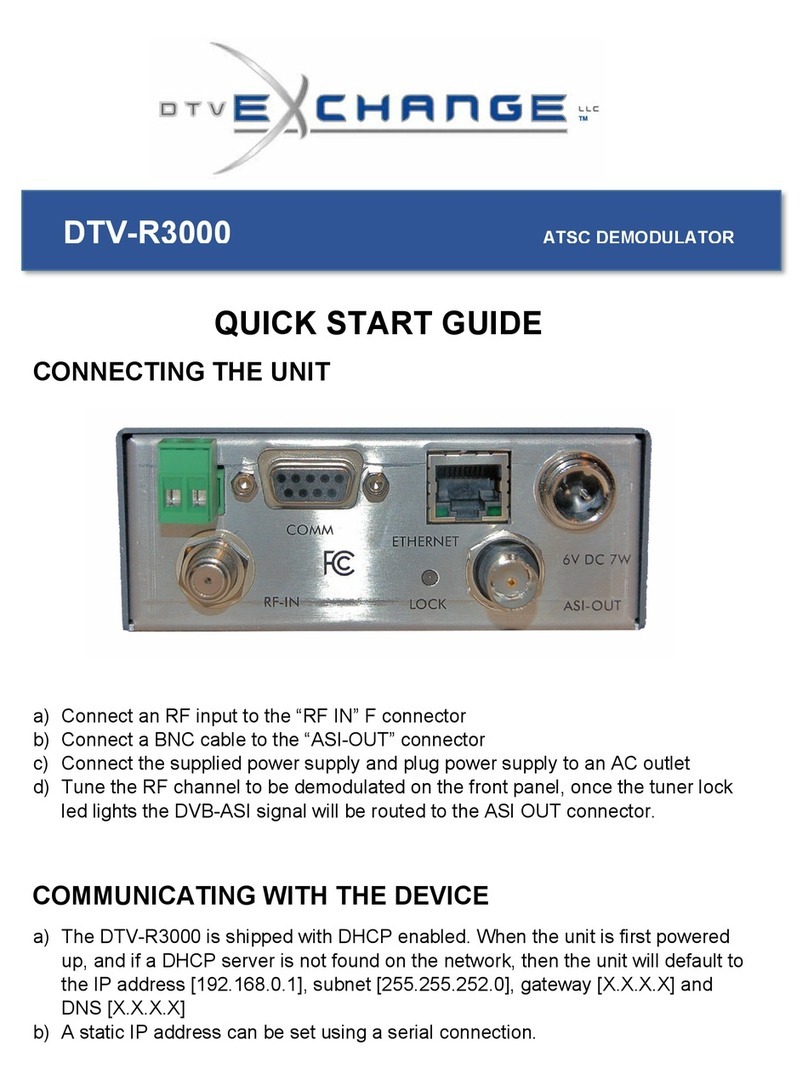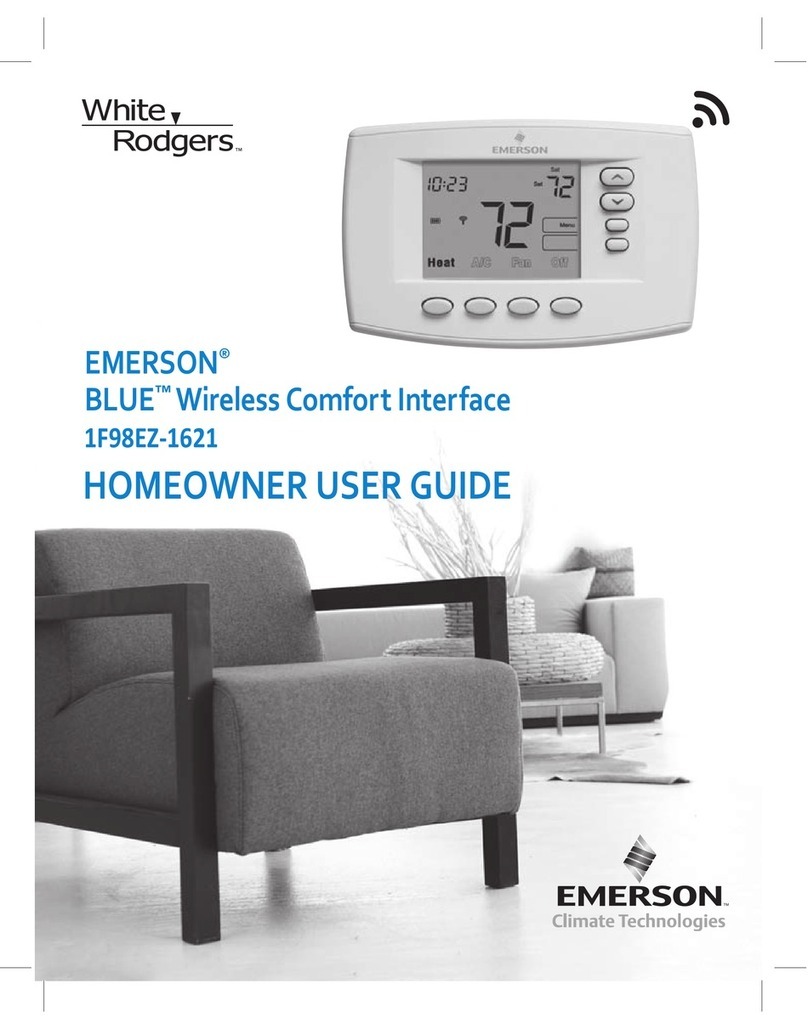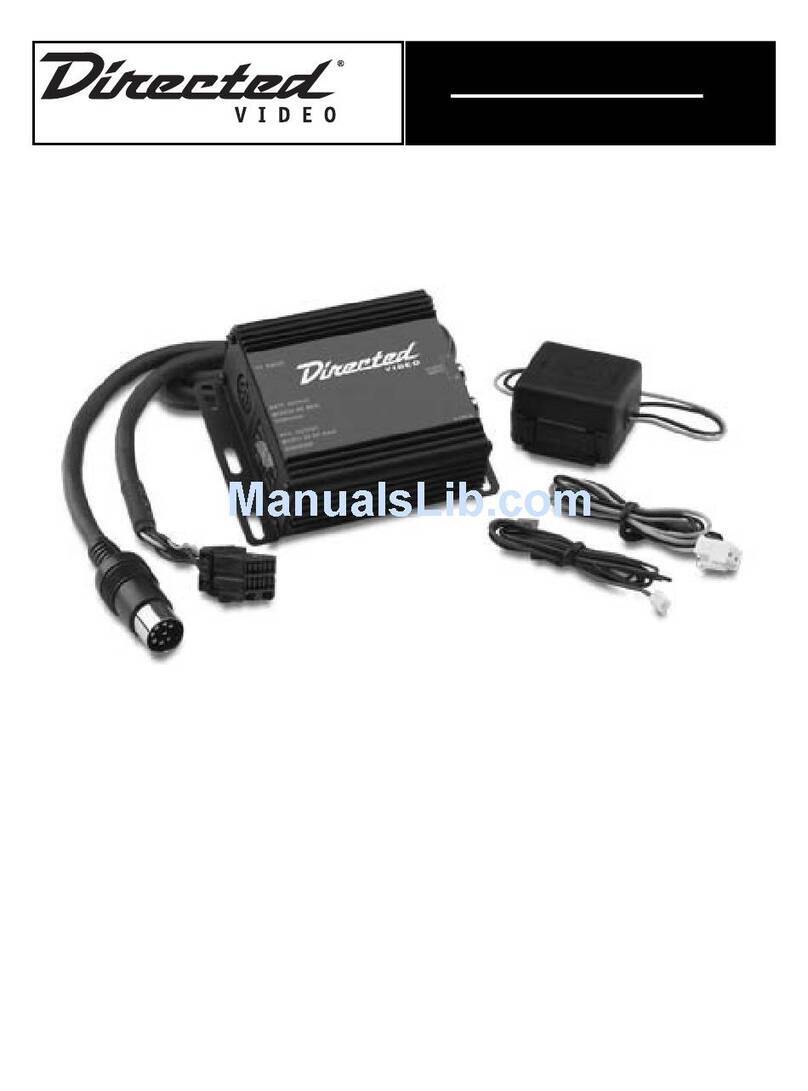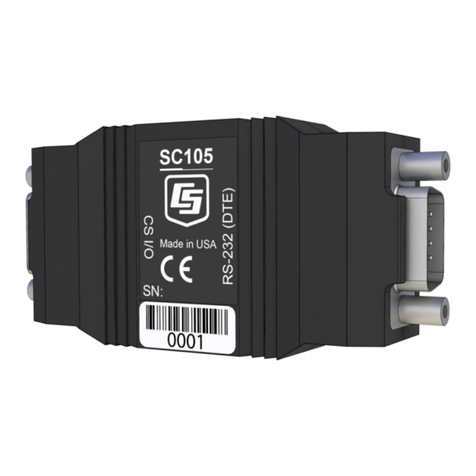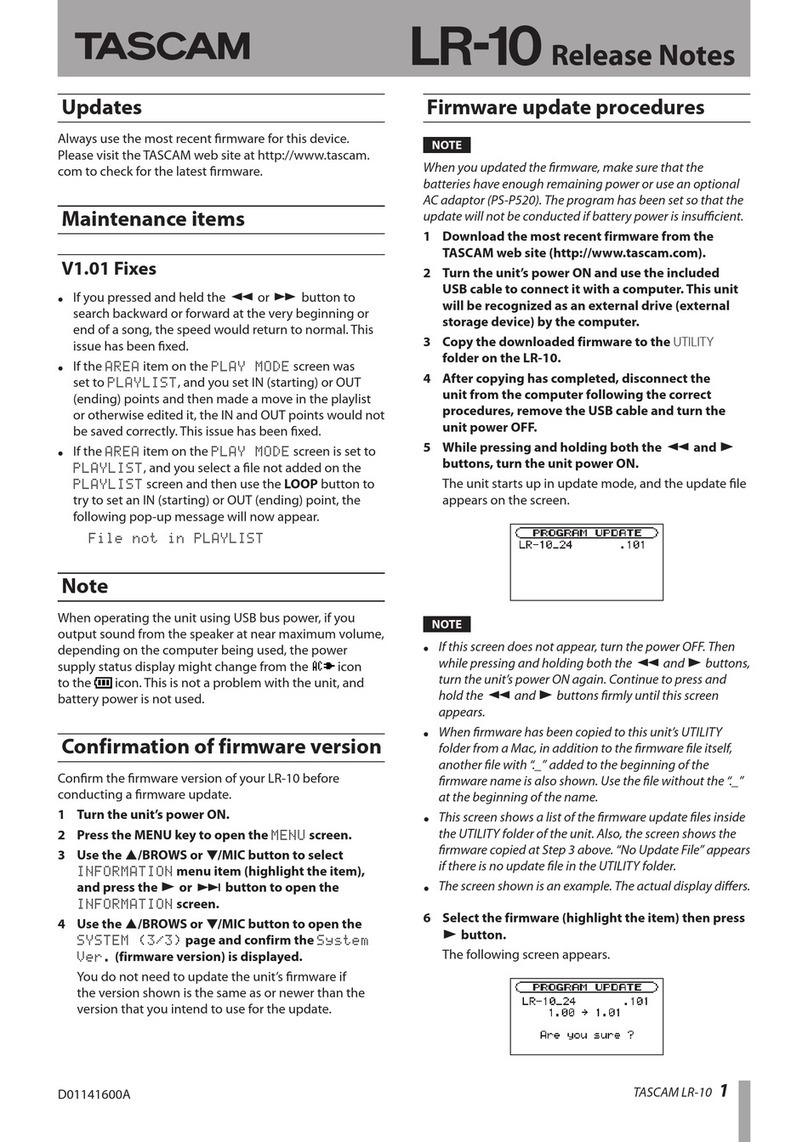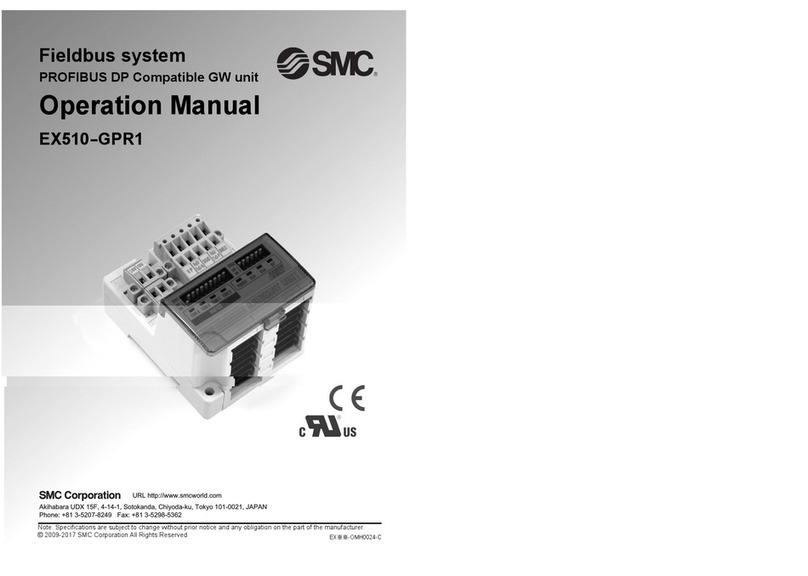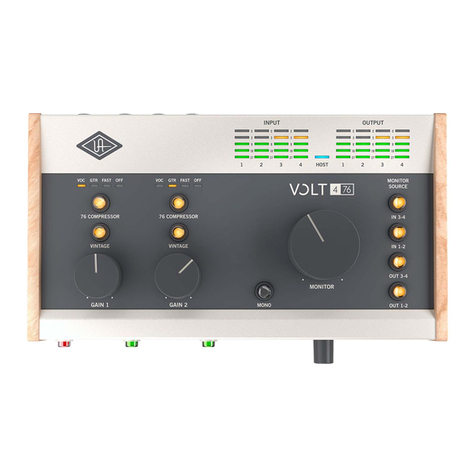TANDBERG 3400X User manual

TANDBERG
:
3400X
3900X
3600
XD
SERVICE
MANUAL
lan
i

CONTENTS
Ne
991000909
0009007
DOO
eat:
Ne
Am
pone
Ae
he
one
Go
or
ip
be
ho
Or
p>
Go
Ro
ot
bo
Ne
OOD
19H
MMH
NNNN
ADABAAA
warn
GON
a
Fe
a
bet
et
et
he
11.3
Page
IntPOCUCH
ON
£3045
:<.e
Dio
oS
eh
og
BS
OUR
a
eee
eens
Sa
BAER
Ee
eS
a
del
ne
Pie
nGl
sate
ee
8
GENE
al
os
iwd
cy
ahiniad
SS
We
wah
weet
8
RS
Rae
2H
SN
SR
TOR
ae
oe
ein
neler
Ma
Pa
e
oree
nea
3
Removing
the
top
Panel
sacs
.\
esa
tew'ee
SoA
Sane
ae
ees
wa
aw
tds
HERES
ES
CS
AES
ONT
OR
3
Maintenance:
4
sop
6
25
cape
be
eg
BS
a
PS
EDT
ES
ONO
EDN
Oe
Se
Ee
Be
TEs
4
Cleaning
the
tape
path
scccks
cared
S305
he
wl
SA
ee
aie
6
SO
RARE
RGAS
RSA
ee
Rare
aR
4
DUB
Ceti
Oh
ayes
esc
sey
ae
ORS
eae
See
EE
Ladies
+E
Ss
RMT
RSO
Ee
VEE
seeae
Red
4
Mechanical
checks
and
adjustments.
........
0.
ce
eee
cee
eee
ee
ee
ee
ee
eee
e
eee
enn
eeees
5
Checking
the
take-up
force
and
winding
force...
.
0...
cece
cece
eee
e
eee
eeeeees
5
Adjusting
the
take-up
Torte;
3
hc
e00d
wale
Sel
eee
ke
et
SAN
FREE
MEARE
BIER
OS
See
S
5
Adjusting
the
winding
force.
sce
elaa's
<
ow
doe
PEt
Fe
ee
CONE
NS
Oa
Re
a
ee
Dee
ea
Re
6
Adjusting
the
brakes.
40:54Gis
6
Saeag
sane
shad
oS
oie cis
aan
DEON
SNe
ae
HEARS
eT
HINES
8
Rubberdrive
belt
sca
cia
oak
ah
ey
BEE
er
OOS
Aas
pk
ea
ene
ANS
OG
OSS
ORNS
Re
oe
eS
8
Pressiire:
pad!
ari.
s-
6
6:5
csd.8
ed
Sis
ssieaed
oe
eer
oicte
faded
Pde
e
ie
gle
Sn
SA
ad
pine
aye
gle
Cleuaiever
ere
OP
aa
elese
9
Pape:
pathy
ies
iss
echo
0c,
205
Sods
toe
eilavie
Oe
ae
cle
eaiecd
Greve
eee.
a
MEM
ee
ate
geee
Biawere
es
-eb
sd
oem
ase
ems
pten
ees
10
Capstan
x4.
ceecs
are.
ereb
rote
ite-0:
wtb,
oie
tae
SPL
fa
8,
bios
SAaveyefor
estas
We
edna
shee
Sara
welled
and
leh
Gla
ereves
oN
10
FIGAad
pataleHsi
whos
ow
nhs
Gs
Ga
twe
nga
uk
odin
Wee
e
atOas
Sara
ays dow
a
at
Ge
acetate
SIR
eee
tie
ee
10
Tape
guide
posts
and:
guide
screws:
<a
saw
win
ony
dae
bs
lesb
a0
Fale
Sop
S
Seyi
ade
Soe
Galea
re
We
OSG
OUs
11
PINCH
TOM
OR
eink.
oe
Vt
Sa"S
eine
eh
OG
RNR
G
Hits
Aaa
or
0d
eR
Bee
S
ER
AA
Ele
Oe
een
oe
Oe
11
Flutter
tOlletsoiccte
a
eicadiens
oe
wits
ha
BS
Pere
eww
a
LE
Sab
o's
DR
EW
eNO
Me
DEER
SD
Ca
WEES
S
12
Head
alignment
with
Tandberg
test
tapes,
four
tracks.........
0...
e
eee
eee
eee
eee
eee
eens
13
Playback
Neat
oi
hos
weir
wae
Ae
obs
Vid
Oe
oe
seen
eCard
bene
ieee
MS
wal
ees
ore
ae
Vane
13
RECOre
Nea
AG
ela
eo
Le
Shc
acne
«emits
ave
er
ciee
We
aia
yee
anlar
EW
peat
ere
ew
aaa
andy
earl
ary
13
Height
adjustment:
by
tack
measurement
..0o
5
bv
isicc
dees
ede
dates
Cheat
ee
ot
we
eS
ee
13
DIAS
NEA
s
5s.
cress.w
assis
auton
EGE
a
5
aS
Sas
ARON
Sw
His
oe
A
ea
SNe
UO
Oe
Olena
een
gee
peateannad
14
EF
ASE
HEA
5
14-59
Ais
ces
ss
OS
8
ah
BO)
8
WHE
SEA
Rw
Rie
Oe
Ne
eS
SG
TA
WN
ie
a
we
ake
aha Bie
ea
Tate
we
14
Head
alignment
without
Tandberg
test
tapes,
four
tracks...
2.0.0...
cece
ce
ee
ee
eee
eens
15
PlAVDACK
HAG
ton
BOREL
Med
sie
Vea
Ree
Gus
cS
Se
Ow
a
KORE
OE
Mee
EE
eS
UALS
e
Sos
eens
15
ROCOPE
HEA
cy
Wre'e
c
a
Phen
ee
atk
eee
eee
ee
a
Phe
ee
Sed
os
barn
eee
eee
ase
alae
15
Bias
Nea
sisi
wkatew
keeles
A
ESG
AKA
Ke
ied
ROWER
TI
HO
we
eae
OG
ew
ede
a
ka
Salers
Kod
bE
15
Bras
NCA
Gee
hese
a
aca
amin
al
hie
PALER
aus
Fe
AUS
Oe
ee
Kees
See
e
eee
baemle
ek
15
Aligning
the
hum
shield
for
the
playback
head
..
1.6...
ccc
ccc
cece
cece
ee
een
eens
15
Head
alignment;
(WO
tacks
6
20%
ioe
eek
Ga
ea
eee
heed
edie
a
melee
16
Playback)
Head
sis00
dice
GGG ESE See
TORE
WMA
E
Rew
hy
De
Rae
eS
a
bE
ERM
aA
Ea
ReS
16
Record
Head
gsyiiae
oe
case
esi
Ae
ee
Rae
dP
RIE
So
RE
Ge
oe
biog
dais
2
WRG
Sw
athe
SP
diotw
BOSS,
2S
16
Erase
Dead
vie!
oda:
nie
creda
Cd
aod
tare
Wece!
Boe,
3
NG
wae
dette
Bick
Bild
cabtg
fo
Orovatie,
ine.
oP
eMGnb
cd
area
wW: Sel
be
i
weber
er
ee
tts
17
COP
COLES
Se
ew
te
ale
a
alae
Sb
al
ean
hae
orb
gases
ah
ANS
ilar
wt
skied
la
Ne
was
RateaS
17
OSCIGTORS
©
soe
ee
i
shi
woaie
Duwi
On
BARE
W
ee
Eee’
oS
4
ROOTES
awe
oe
eee
eee
17
PHO
CHASLOD
36
bois
ens
586
CERES
BHA
RRA
See
ONT
MARE
DE
Eee
Ee
aeyeee
He
Vere
cs
17
Record
and
playback
frequency
responses
...
1.0.0...
sees
e
cece
eee
e
ees
Sa
aieeatecat
cia
ee
oe
18
Fault
in
the
total
response
curve,
one
channel...
1.2...
0.0...
cee
eee
eee
eee
eee
eee
eeees
19
MOGI
CAH
ONE
ince
ste
AN
SSeS
ka
ON
AO
ae
RADE
ECTS
Le
WERE
eke
Sad
ea
SAG
S
20
Changing
the
line
voltage
and
frequency...
1.0...
cece
ee
eee
eee
eee
cee
een
enes
20
Changing
from
four
tracks
to
two
tracks
version.
...
0.0.06.
c
cece
cece
cee
eee
eee
eens
20
Block
diagrams
......
0.0.00.
c
cece
cece
eee
eee
ees
Sereeay
ei
al
&,
bes
Slap
eeSeid:
KU
lac
Wid
co
ta's
AVG
ac
Se
alee
bree
20
Electrical
adjastmentes05
42.
Sie
4
Ge
aN
aise
ed
RGUaia
pea
Swe
4s
Sale
De
a
a
ya
Sales
ete
22
Output
amplifiers:
(S400
X)
03.65
iteeds
cbeiiie
eas
wea
sae
Ma
dae
a
oh
woe
ees
oe
eRe
22
Dolby®
level
adjustments
(S600
XD).
v5
si
bsiad
chew
dddi
ne
kaigete
sna
ie
eee
dwhlews-wa
dane
dae
ce
22
Adjustments,
all
Models
ios.
sds0s
Gh
wee
oan
Vuk
te
aed
ead
hae
Sessa
eee
23
Circuit
diagrams!
6
ibe
bie
eo
he
S
AEG
en
GEIS
BR
TE
ee
bs
bee
da
ees
from
page
24
*
The
word Dolby
ts
a
Trade
Mark
of
Dolby
Laboratories
Inc.,
USA

ils
INTRODUCTION
1.1
GENERAL
Only
LH
(Low
Noise/High
Output)
tape
should
be
used
for
recording.
Make
sure
that
the
heads
and
tape
path
are
clean.
4
To
check
the
heads:
1.
Remove
the
front
head
cover
by
depressing
the
spring
loaded
buttons
at
both
ends
and
lifting
the
cover
straight
upwards.
2.
Remove
the
back
cover
by
depressing
the
spring
on
its
rear
side
and
lifting
straight
upwards.
When
electrical
adjustments
are
to
be
made,
the
bottom
panel
must
be
removed.
The
tape
path
must
be
degaussed
both
before
and
after
adjustment.
Do
not
switch
off
the
degausser
until
it
is
about
3
feet
from
the
tape
path.
To
make
magnetized
parts
of
the
tape
visible,
dip
the
tape
in
“Magna
See’’.
This
is
a
mixture
of
iron
oxide
powder
and
alcohol.
Iron
oxide
powder
can
be
obtained
from
our
service
department.
NOTE!
All
paragraphs
in
this
manual
are
valid
for:
Model
3400X,
from
serial
No.
4300
000
Model
3500X,
all
decks
Model
3600XD,
from
serial
No.
4200
000
1.2
REMOVING
THE TOP
PANEL
Remove
the
head
covers
and
the
speed
selector
knob.
Then
remove
the
screws
as
shown
in
Figure
1.1.
Removal
of
the
top
panel
will
usually
only
be
necessary
for
checking
and
adjustment
of
clutches
and
other
parts
in
the
drive
mechanism.
Fig.
1.1.
Top
panel
screws

2.
MAINTENANCE
Fig.
2.1
Cleaning
the
tape
path
2.1
CLEANING
THE
TAPE
PATH
It
is
important
that
the
tape
path
is
clean
before
adjustments
are
made.
If
the
heads
and
guide
posts
have
been
adjusted,
the
tape
path
must
be
de-
magnetized.
Cleaning
should
be
carried
out
with
cotton-bud
sticks
(Q-tips)
moistened
with
pure
alcohol
or
methylated
spirit.
A
special
cleaning
kit
called
“Tandberg
Professional
Tape
Head
Cleaner’”’
is
also
available.
Aerosol
sprays
indented
for
video
tape
recorders
may
be
used,
but
it
is
not
sufficient
just
to
spray
the
parts;
cotton-bud
sticks
must
also
be
used.
Obstinate
deposits
on
guide
posts
should
be
first
well
softened
with
the
cleaning
agent
and
then
removed
with
the
aid
of
a
toothpick.
The
pinch
roller
A
should
be
cleaned
if
the
tape
runs
unevenly
or
if
there
are
visible
deposits
on
the
roller
(4
to
6
times
a
year
should
be
sufficient,
even
if
the
tape
recorder
is
much
used).
Make
sure
that
the
pinch
roller
is
dry
after
cleaning.
2.2
LUBRICATION
NOTE!
Do
not
use
more
than
one
drop
of
oil
on
each
bearing,
as
excessive
oil
may
penetrate
into
the
drive
mechanism
and
disturb
friction
conditions.
The
turntables,
flywheel
and
transfer
wheel
are
mounted
in
self-lubricating
bearings
and
should
not
need
attention
under
normal
conditions.
If
for
some
reason
lubrication
appears
to
be
necessary,
use
Teresso
oil
No
43
or
47
from
Esso.
The
motor
should
be
lubricated
after
every
3000
hours
of
operation.
Apply
only
one
drop
of
Teresso
oil
No.
43
or
47
from
Esso.

3.
MECHANICAL
CHECKS
AND
ADJUSTMENTS
3.1
CHECKING
THE
TAKE-UP
FORCE
AND
3.2
ADJUSTING
THE
TAKE-UP
FORCE
WINDING
FORCE
Fig.
3.1
Checking
the
winding
force.
Fig.
3.3
Adjusting
the
take-up
force.
A
7”
reel
with
a
hole
drilled
in
it
80
mm
from
the
NOTE!
Do
not
touche
the
textile
side
of
the
hub
hole
is
required
together
with
a
torque
gauge.
belt
with
your
fingers.
Insert
the
leg
of
the
torque
gauge
into
the
drilled
hole.
The
reel
should
be
allowed
to
rotate
slowly
The
rubber
drive
belt
does
not
move
during
normal
in
the
direction
of
the
clutch
torque
while
the
forward
drive.
This
is
because
a
textile
belt
pro-
measurements
are
performed
to
obtain
the
speci-
vides
the
take-up
force
via
a
drive
wheel
mounted
fied
values,
see
table
3.2.
behind
the
take-up
turntable.
Adjust
the
take-up
force
by
moving
the
spring,
see
Figure
3.3.
Playback
or
wind
force
Turntable
|
Operating
lever
position
If
the
winding
force
is
not
correct
it
should
be
adjusted
as
explained
on
the
next
page.
90—250
g*
Table
3.2
Clutch
torque
*
It
is
normal
for
the
winding
force
to
increase
20-30%
after
the
machine
has
been
in
continuous
operation
for
some
time.

3.3
ADJUSTING
THE
WINDING
FORCE
Adjusting
the
reel
turntables.
The
winding
force
is
determined
by
the
springs
A.
See
Figures
3.5
and
3.7,
If
the
tension
and
the
springs
do
not
change,
the
winding
force
is
deter-
mined
by
the
play
on
the
reel
turntable
and
the
clutch
leaver.
If
the
tension
is
still
not
correct
after
adjusting
the
play,
replace
the
spring
A.
With
the
joystick
in
the
FREE
position,
the
play
on
the
turntable
should
be
between
0.5
and
1
mm
as
shown
in
Figure
3.4.
The
play
on
the
left
turn-
table
can
be
adjusted
by
turning
the
nut
on
the
turntable
spindle.
The
play
on
the
right
twmtable
can
be
adjusted
by
turning
the
turntable
pulley.
NOTE!
If
the
turntable
pulley
(right
turntable)
must
be
unscrewed
from
the
turntable
it
should
be
glued
into
position
after
the
play
has
been
adjusted.
Fig,
3.3
The
supply
turntable

Fig.
3.6
Checking
the
play
on
the
clutch
levers
Adjusting
the
clutch
lever.
With
the
joystick
in
the
NEUTRAL
(middle)
position,
the
play
on
the
clutch
levers,
right
and
left,
should
be
between
0.5
and
1
mm.
To
adjust
this
play,
turn
the
screws
B
shown
in
Figure
3.6.
When
the
play
on
the
turntable
and
the
clutch
levers
has
been
adjusted,
the
winding
forces
will
be
correct.
Check
these
forces
with
the
aid
of
the
table
on
page
5.
Adjusting
the
brakes
—
see
next
page.
Fig.
3.7
The
take-up
turntable

3.4
ADJUSTING
THE
BRAKES
This
adjustment
procedure
is
the
same
for
both
turntables,
but
referende
is
made
to
the
right
turn-
table.
See
Figure
3.8.
Set
the
joystick
to
the
®
position.
Check
that
the
clearance
between
the
brake
pad
and
the
turntable
is
1
mm
(0.4”’)
approx.
If
necessary
adjust
screw
D.
Set
the
joystick
to
#4,
alternatively
>»
and
check
the
clearance.
3.5
RUBBER
DRIVE
BELT
The
rubber
drive
belt
does
not
move
in
PLAY
mode.
This
is
because
a
textile
belt
provides
the
take-up
force
via
a
drive
wheel
mounted
behind
the
take-up
turntable.
When
changing
the
drive
belt,
make
sure
that
the
new
belt
sits
correctly
on
the
motor
pulley
as
shown
in
Figure
3.9.
The
belt
must
sit
in
the
top
two
belt
grooves
and
not
in
the
same
groove.
Thebelt
must
not
cross
on
the
wrong
side
of
the
pulley.
Fig.3.8.
Adjusting
the
brakes
on
the
right
turntable
Fig.
3.9
Replacing
the
drive
belt

imm
The
lifting
arms
for
the
drive
belt
should
be
adjusted
when
the
joystick
is
in
NEUTRAL
(mid-
position).
Adjust
for
1
mm
clearance
with
flat
pliers
as
shown
in
Figure
3.10.
Adjust
A
first
and
the
B.
Fig.3.10.
Adjusting
the
clearance
on
the
drive
belt
3.6
PRESSURE
PAD
ARM
With
the
joystick
in
the
>
position,
the
tension
from
the
pressure
pad
arm
against
the
bracket
should
be
between
80
and
100
g.
This
pressure
should
be
measured
as
shown
in
Figure
3.11.
Adjust
by
bending
spring
A
which
presses
the
pressure
pad
arm
against
the
head.
Check
that
the
pressure
pad
arm
is
parallel
when
it
meets
the
bracket.
,
Fig.3.11.
Measuring
the
pressure-pressure

4.
TAPE
PATH
4.1
CAPSTAN
Before
the
heads
and
tape
guide
posts
are
adjusted,
the
position
of
the
capstan
must
be
checked.
Use
special
tool
No.
5
as
shown
in
Figure
4.1.
All
three
legs
of
the
special
tool
should
rest
on
the
upper
mounting
plate.
If
one
or
more
of
the
legs
does
not
rest
on
the
plate,
the
capstan
needs
adjusting.
To
adjust
the
capstan,
loosen
the
three
coloured
screws
and
adjust
the
capstan
until
all
three
legs
of
the
tool
rest
on
the
plate.
Tighten
up
the
screws
and
check
again
that
the
legs
are
all
touching
the
plate.
NOTE!
The
capstan
will
not
go
out
of
adjustment
with
normal
use
and
transit.
4.2
HEAD
PARALLELISM
Check
that
the
heads
are
parallel
with
the
aid
of
a
tape
path
gauge,
see
Figure
4.2.
This
adjustment
affects
the
passage
of
the
tape
through
the
tape
path,
and
where
the
heads
are
seriously
out
of
alignment
the
complete
tape
path
must
be
checked,
see
next
page.
iC
il
__Il
Adjust
Adjust
Correct
Forwards
Backwards
Zenith
Fig.
4.1.
Adjusting
the
capstan
with
special
tool
No.
5.
Fig.
4.2.
Adjusting
with
the
tape
path
gauge.

4.3
TAPE
GUIDE
POSTS
AND
GUIDE
SCREWS
Fig.
4.3.
Adjustable
tape
guide
posts.
Thread
a
tape
into
the
tape
path.
Pull
the
joustick
slowly
down
into
the
>
position
and
tighten
the
tape
by
rotating
the
left
reel
slowly
clockwise.
Check
that
the
tape
does
not
come
into
contact
with
the
edges
of
the
tape
guide
screws.
If
necessary,
adjust
the
guide
screws
shown
in
Figure
4.3.
When
the
machine
is
in
the
playback
mode
and
tape
is
passing
the
heads,
the
tape
may
touch
the
top
edges
of
the
guide
posts
and
guide
screws,
but
under
no
circumstances
should
it
twist
or
distort.
4.4
PINCH
ROLLER
The
two
adjustments
possible
on
the
pinch
roller
are
parallelism
and
azimuth.
Parallelism.
Push
the
pressure
roller
arm
in
and
check
that
the
pinch
roller
is
parallel
with
the
capstan.
To
adjust,
loosen
screw
A
and
adjust
screw
B
(Figure
4.4)
until
the
pinch
roller
and
capstan
are
parallel.
Tighten
up
screw
A.
Azimuth.
Put
a
tape
into
the
tape
path
and
move
the
joystick
to
»
.
Check
that
the
tape
does
not
distort
when
it
has
passed
the
pinch
roller.
To
adjust,
loosen
screw
A
and
move
bracket
C
(Figure
4.4)
until
the
tape
runs
properly.
Tighten
up
screw
A.

4.5
FLUTTER
ROLLER
Parallelism.
Loosen
screw
A
(Figure
4.5).
Insert
a
screwdriver
into
the
slot
and
move
the
upper
bearing
forwards
or
backwards
until
the
flutter
roller
is
parallel
with
the
head
front.
Fig.
4.5.
Adjusting
the
parallelisem
of
the
flutter
roller.
Azimuth.
Set the
speed
selector
to
7%
ips,
put
a
tape
into
.the
tape
path,
and
move
the
joystick
to
>
.
Insert
a
screwdriver
as
shown
in
Figure
4.6
and
twist
it
to
move
the
flutter
roller
to
the
left
until
the
tape
just
touches
the
top
edge
of
the
nearest
tape
guide
post:
Fig.
4.6.
Adjusting
the
azimuth
of
the
flutter
roller.
Move
the
screwdriver
to
the
position
shown
in
Figure
4.7
and
move
the
flutter
roller
carefully
to
the
right.
If
the
roller
is
correctly
adjusted
the
tape
will
lift
slowly
upwards
from
the
bottom
part
of
the
tape
guide
post
and
touch
the
upper
part
of
the
tape
guide
post
without
curling.
This
adjustment
can
be
checked
with
a
lamp
placed
behind
the
tape
path.
Look
from
the
front
to
see
light
between
the
tape
and
the
lower
part
of
the
tape
guide
post.
Fig.
4.7.
Adjusting
the
azimuth
of
the
flutter
roller.

5.
HEAD
ALIGNMENT
WITH
TANDBERG
TEST
TAPES,
FOUR
TRACK
NOTE!
The
tape
path
must
be
thoroughly
cleaned
before
adjustments
are
carried
out.
Use
tape
without
any
defects.
If
the
heads
have
grooves
caused
by
wear,
adjustment
of
the
heads
should
be
avoided.
Seal
all
screws
in
the
tape
path
after
the
adjust-
ments
have
been
made.
After
replacement
of
a
single
part
in
the
tape
path,
it
may
often
be
necessary
to
adjust
the
new
part
only.
If,
however,
more
parts
have
to
be
adjusted,
a
complete
check
and
adjustment
of
the
entire
tape
path
must
be
performed.
Adjustments
must
be
carried
out
in
the
same
sequence
as
explained
in
this
section.
5.1
PLAYBACK
HEAD
Connect
an
a.c.
voltmeter
to
each
of
the
LINE
OUT
sockets
and
set
the
SOURCE/TAPE
buttons
to
TAPE.
Height
adjustments
Play
back
test
tape
No.
1.
This
is
a
full
track
pre-
recorded
tape
with
1,000
Hz
recorded
at
7%
ips
and
with
the
area
corresponding
to
track
3
reduced
by
approximately
35
dB.
Adjust
the
height
of
the
playback
head
by
means
of
screw
A,
Figure
10.1,
page
21
until
minimum
output
is
obtained
from
track
3,
channel
R
while
maintaining
the
head-front
parallel
to
the
tape.
Azimuth
adjustments
Play
back
Tandberg
test
tape
No.
2
at
7%
ips
(or
a
standard
azimuth
tape).
Adjust
the
azimuth
posi-
tion
of
the
playback
head
by
means
of
screw
B,
Figure
10.1
(page
21)
until
maximum
output
on
the
voltmeters
is
obtained
on
both
channels,
or
adjust
for
the
best
compromise.
5.2
RECORD
HEAD
Height
adjustment
by
visual
inspection
Insert
a
new
tape
and
set
the
deck
to
normal
forward
drive
(
»
).
Check
visually
that
the
tape
appears
to
run
parallel
with
the
upper
track
on
the
record
head,
within
approximately
0.1
mm
(0.04’’)
see
Figure
5.1.
If
necessary
adjust
the
height
with
screws
C,
Figure
10.1,
while
main-
taining
the
head-front
parallel
with
the
tape.
Height
Lateral
Alignment
Azimuth
Zenith
5.3
HEIGHT
ADJUSTMENT
BY
TRACK
MEASUREMENT
Record
in
stereo
a
1,000
Hz
signal
well
above
the
normal
level,
first
in
one
direction,
then
in
the
opposite
direction.
Cut
off
a
length
of
tape
and
dip
into
a
solution
of
fine-grained
iron-oxide
powder
and
alcohol
(Magna
See).
The
tracks
will
then
be
visible
as
four
dark
stripes.
Figure
10.2
(page
21)
shows
the
correct
pattern
on
the
tape
and
the
patterns
obtained
when
the
head
is
either
too
high
or
too
low.
If
necessary,
adjust
the
height
of
the
head
and
repeat
the
measurement
until
the
patters
are
correct.
Azimuth
adjustment
Load
the
deck
with
a
new
tape
and
record
at
3%
ips
a
12
to
13
kHz
signal
in
stereo.
Set
the
SOURCE/TAPE
buttons
to
TAPE.
Adjust
both
INPUT
LEVEL
potentiometers
for
approximately
150
mV
reading
on
a.c.
voltmeters
connected
to
the
LINE
OUT
sockets.
Adjust
the
screw
D
(figure
10.1)
for
maximum
output
from
both
channels,
or
the
best
compromise.
Approx.
0.1
mm
of
upper
pole
piece
visible
above
tape.
Fig.
5.1.
Four
track
record
head.

5.4
BIAS
HEAD
Vertical
adjustment
Move
the
operating
lever
slowly
to
the
normal
for-
ward
drive
position
(
»
)
and
check
that
the
head-
front
of
bias
and
record
heads
are
parallel.
If
necessary,
bend
the
arm
of
the
bias
head
as
required.
Height
adjustment
Set the
deck
to
the
stereo
record
mode,
and
un-
screw
the
locking
screw
H
(Figure
10.1)
about
one
turn.
Connect
an
a.c.
voltmeter
across
each
half
of
the
record
head.
Move
the
bias
head
up
or
down
by
means
of
adjustment
screw
M
(Figure
10.1)
for
the
highest
possible
reading
on
the
voltmeter.
Check
that
the
tape
runs
freely
in
the
groove
in
front
of
the
bias
head,
and
that
there
is
sufficient
clearance
between
the
bias
head
and
the
mounting
plate
for
the
record
head.
If
necessary,
raise
the
bias
head
slightly.
The
height
position
of
the
bias
head
is
not
critical.
Before
tightening
screw
H,
carry
out
the
horizontal
adjustment
as
follows.
Horizontal
adjustment
Connect
an
a.c.
voltmeter
across
each
half
of
the
record
head
and
set
the
deck
to
the
stereo
record
mode.
Insert
a
screwdriver
in
the
groove
shown
in
Figure
5.2
and
tilt
the
bias
head
to
the
right.
Then
tilt
the
bias
head
carefully
by
means
of
the
screw-
driver
towards
the
left
until
the
induced
voltage
(bias)
in
the
record
head
increases
to
a
maximum.
Continue
tilting
the
head
towards
the
left
until
the
induced
voltage
(bias)
in
the
record
head
is
reduced
to
between
10
and
15%
below
maximum.
Tighten
screw
H
while
maintaining
the
correct
horizontal
position
for
the
head.
Then
re-check
the’
output
voltage.
If
the
voltage
has
changed
notice-
able,
the
horizontal
adjustment
procedure
must
be
repeated.
Fig.
5.2.
Horizontal
adjustment
for
the
bias
head.
5.5
ERASE
HEAD
|
Height
adjustment
By
visual
inspection,
check
that
approximately
0.25
mm
(0.01’’)
of
the
upper
half
of
the
erase
head
is
visible
above
the
tape,
see
Figure
5.3.
Insert
Tandberg
test
tape
No.
9
and
record
on
channel
R
a
400
Hz
signal
well
above
normal
recording
level.
Dip
the
tape
in
a
solution
of
fine-grained
iron-oxide
powder
and
alcohol
(Magna
See).
Check
that
the
recorded
track
is
positioned
in
the
centre
of
the
erased
track,
see
Figure
10.3,
page
21.
Approx.
0.25
mm
of
upper
ferrite
core
visible
above
tape.
Fig.
5.3.
Four
track
erase
head.

6.
HEAD
ALIGNMENT
WITHOUT
TANDBERG
TEST
TAPES,
FOUR
TRACK
6.1
PLAYBACK
HEAD
Height
adjustment
Adjust
the
height
of
the
playback
head
by
means
of
the
screws
A,
Figure
10.1,
page
21.
The
upper
edge
of
the
tape
shall
run
flush
with
the
upper
part
of
the
head
lamination
for
channel
L.
See
Figure
6.1.
Azimuth
adjustment
Set
the
SOURCE/TAPE
buttons
to
TAPE.
Play
back
a
standard
azimuth
alignment
tape
with
an
a.c.
voltmeter
connected
to
each
LINE
OUT
socket.
Adjust
the
position
of
the
playback
head
by
the
azimuth
adjustment
screw
B,
Figure
10.1
until
a
maximum
reading
is
obtained
on
the
voltmeters.
6.2
RECORD
HEAD
Follow
the
instructions
given
in
Paragraph
5.3.
6.3.
BIASHEAD
Follow
the
instructions
given
in
Paragraph
5.4.
6.4
ERASE
HEAD
Height
adjustments
Adjust
the
height
of
the
erase
head
by
means
of
the
screws
K
and
L,
see
Figure
10.1.
Approximately
0.25
mm
(0,01”’)
of
the
ferrite
core
for
the
upper
track
of
the
erase
head
should
be
visible
above
the
tape,
see
Figure
6.2.
Upper
edge
of
tape
coincides
with
upper
edge
of
upper
pole
piece,
Fig.
6.1,
Four
track
playback
head.
6.5.
ALIGNING
THE
HUM
SHIELD
FOR
THE
PLAYBACK
HEAD.
The
hum
shield
for
the
playback
head
is
positioned
on
the
pinch
roller
arm
so
that
the
shield
is
right
in
front
of
the
head
during
playback.
Set
the
deck
to
stereo
playback
with
both
SOURCE/TAPE
buttons
in
the
position
TAPE
without
tape
in
the
tape
path.
Put
a
piece
of
paper
between
the
photoelectric
end-
stopsensor
and
the
light.
Set
the
deck
to
PLAY.
Connect
an
a.c.
voltmeter
to
each
of
the
LINE
outputs.
Hold
the
shield
and
loosen
screw
E
(Figure
10.1)
one
quarter
turn.
Pull
the
shield
as
far
away
from
the
head
as
the
mounting
hole
permits.
Adjust
the
shield
sideways
to
obtain
a
minimum
reading
on
both
voltmeters,
or
best
possible
compromise.
When
adjustment
is
completed,
tighten
the
screw
and
seal
with
lacquer.
Approx.
0.25
mm
of
upper
ferrite
core
visible
above
tape.
Fig.
6.2.
Four
track
erase
head.

7.
HEAD
ALIGNMENT,
2
TRACKS
7.1
PLAYBACK
HEAD
Height
adjustment
Adjust
the
height
of
the
playback
head
by
means
of
the
screws
A,
Figure
10.1.
The
tape
shall
run
parallel
with
the
upper
and
lower
edges
of
the
laminations
of
the
playback
head,
see
Figure
7.1.
If
necessary,
re-adjust
and
check
the
azimuth
position.
7.2
RECORD
HEAD
Height
adjustment
Adjust
the
height
of
the
record
head
by
means
of
the
screws
C,
Figure
10.1.
Record
on
channel
L
a
1,000
Hz
signal
at
7%
ips
well
above
normal
recording
level,
first
in
one
direction,
then
in
the
opposite
direction.
Cut
off
a
lenth
of
the
recorded
tape
and
dip
it
into
a
solu-
tion
of
fine
grained
iron-oxide
powder
and
alcohol
(Magna
See).
Check
that
the
tracks
are
distributed
symmetrically
across
the
tape.
See
Figure
10.4,
page
21.
If
necessary,
re-adjust
and
check
the
azimuth
position.
7.3
ERASE
HEAD
Height
adjustment
Adjust
the
height
of
the
erase
head
by
means
of
the
screws
K
and
L,
Figure
10.1.
Adjust
until
equal
parts
of
the
ferrite
cores
are
visible
above
and
below
the
tape,
see
Figure
7.2.
Upper
and
fower
edge
of
tape
coincide
with
upper
and
lower
pole
pieces.
Fig.
7.1.
Two
track
playback
head.
Ferrite
cores
visible
above
and
below
tape.
Fig.
7.2.
Two
track
erase
head.

8.
CIRCUITS
8.1
OSCILLATOR
The
oscillator
frequency
is
85.5
kHz
for
a
stereo
recording.
Measure
this
frequency
with
a
frequency
counter
on
the
bias
head
and
adjust
with
C502
on
the
oscillator
board.
8.1.1
Erase
voltage
Prepare
the
machine
for
a
stereo
recording.
Connect
a
VVM
to
the
upper
half
of
the
erase
head
via
a
low
capacity
probe.
Check
that
the
voltage
is
between
80
and
120
V.
Check
that
the
same
voltage
appears
across
the
bottom
half
of
the
head.
Set
the
machine
to
record
on
channel
L,
and
check
that
the
voltage
is
the
same
on
the
upper
half
of
the
head.
The
permissable
difference
between
the
voltages
on
the
two
halves
of
the
head
from
a
stereo
recording
is
10
V
max.
Carry
out
the
same
check.
for
channel
R.
8.1.2
Bias
current,
pre-adjustment
Prepare
the
machine
for
a
stereo
recording,
and
use
a
VVM
to
measure
the
voltage
across
the
upper
half
of
the
bias
head.
Adjust
the
voltage
to
22
V
by
means
of
R401.
Check
that
the
voltage
across
the
bottom
half
of
the
head
is
22
V
and
adjust
by
means
of
R400.
Demagnetize
the
heads
and
tape
path.
8.2
PHOTO
END-STOP
To
change
the
lamp,
take
the
screw
out
of
the
tape
guide
post,
push
the
photo
end-stop
unit
back,
and
lift
it
up.
See
Figure
8.2.
The
sensitivity
of
the
photo
end-stop
can
be
adjusted
by
means
of
R512
on
the
oscillator
board.
See
Figure
8.1.
Fig.
8.1.
Oscillator
board.
Fig.
8.2.
Photo
end
stop.

8.3
RECORD
AND
PLAYBACK
FREQUENCY
RESPONSES
8.3.1
Record
amplifier
Connect
a
100
ohm
resistor
in
series
with
the
record
head
and
earth
as
shown
in
Figure
8.3.
Connect
an
audio
oscillator
to
the
LINE
input
of
each
channel
and
a
VVM
across
the
100
ohm
resistor.
Short
circuit
the
trimming
capacitor
C502
in
the
tape
recorder
oscillator.
Put
the
machine
into
the
stereo
record
mode.
Set
the
record
level
to
—
30
dB
on
the
meter
(30
dB
below
normal).
This
30
dB
attenuation
should
be
obtained
as
follows:
10
dB
with
the
INPUT
LEVEL
knobs
on
the
machine
and
20
dB
with
the
output
control
on
the
audio
oscillator.
Tune
the
audio
oscillator
to
400
Hz
and
use
this
for
the
reference
level
on
the
VVM
(0
dB).
Sweep
the
audio
oscillator
over
the
frequency
range
and
check
that
the
readings
on
the
VVM
correspond
to
the
curves
shown
in
Figure
8.4.
8.3.2
Playback
amplifier
Connect
a
22
ohm
resistor
in
series
with
the
write
lead
on
the
playback
head.
Connect
an
audio
oscillator
in
series
with
a
1
k
ohm
resistor
and
a
100
pF
capacitor
as
shown
in
Figure
8.5.
Connect
a
VVM
to
the
outputs
of
channels
L
and
R,
and
set
the
output
selector
to
STEREO.
Use
an
VVM
to
check
the
shape
of
the
playback
frequency
curve.
Tune
the
audio
oscillator
to
400
Hz
and
adjust
the
signal
level
to
75
mV
measured
on
the
LINE
OUT
sockets.
Check
that
the
fre-
quency
responce
curves
agree
with
Figure
8.6.
aij
iif
E
pects
4
+
«
E
|
8
cr
i
nim
:
tig
Seniesa
2
Hott
cae
HY
7
Ri
penis
Series
:
;
Ho
Hi
itt
tC
Oo”
Ct
ot
20
50
100
200
500
Ik
2k
Sk
10k
20k
50k
Fig.
8.4,
Recording
response
curves.
Red
zQ
AMPLIFIER
100
uF
White
22
Signal
generator
ap
Trips
Born
ON
FD
@
{
a
4
[
|
J
u
{i
Lt
0
|
LU
ips
|
it?
-2
+
iy
t
14)
ahir
Me
4
Deips|
|
|
20Hz
50
100
=
200
500
ik
2k
5k
10k
20k 50k
Fig.
8.6.
Playback
response
curves.

8.4
FAULT
IN
THE
TOTAL
RESPONSE
CURVE,
ONE
CHANNEL
f
Play
back
test
tape
No.3
‘\,
"
to
check
the
playback
correction
*
,
curve,
.
%,
1s
the
playback
correction
curve
correct?
#
y,
Change
over
the
wiring
on
.
the
tape
halves
of
the
playback
head.
%
Play
back
No.
3
test
tape
again.
%,
Is
the
fault
on
the
same
channel?
Fault
in
the
playback
head.
Fault
in
the
playback
correction
circuit.
Set
the
machine
to
record.
Connect
an
audio
%,
“oscillator
to
the
LINE
input
and
apply
*
the
frequencies
shown
in
Figure
8.4.
Check
that
both
the
meters
on
the
machine
follow
the
curve
in
Figure
8.4
Fault
in
the
record
correction
circuit
«,
Fault
in
the
record
head
or
the
bias
a
(ey

9.0
MODIFICATIONS
9.1
CHANGING
THE
LINE
VOLTAGE
AND
FREQUENCY
A
label
on
the
motor
shows
you
how
to
wire
the
transformer
and
motor
for
a
different
line
voltage
and
frequency.
When
modifying
from
50
Hz
to
60
Hz,
or
vice
versa,
the
motor
pulley
has
to
be
changed.
Motor
pulley
for
50
Hz,
ordering
No.
243940C
Motor
pulley
for
60
Hz,
ordering
No.
273787
15V
60
Hz
10.
BLOCK
DIAGRAMS
:
a
mic
MIC/
PRE
EOL,
9.2
CHANGING
FROM
FOUR-TRACK
TO
TWO-TRACK
VERSION
The
following
parts
must
be
changed
when
a
four-track
version
is
modified
to
a
two-track
version
and
when
new
heads
are
fitted.
The
value
of
the
total
capacitance
is
labelled
on
the
heads.
F53-11R
F82-07R
C03-10P
F83-11P
Record
head
Playback
head
Erase
head
D84-11E
D87-20E
Bias
head
2079-03B
2958-04B
R136
3.9
k
ohms
2.7
k
ohms
R236
3.9
k
ohms
2.7
k
ohms
C400
3300
pF*
3300
pF*
C401
3300
pF*
3300
pF*
C402
250
pF*
250
pF*
C403
250
pF*
250
pF*
*
Capacitor
must
be
connected
in
parallel
until
value
of
total
capacistance
is
achieved.
LOUD
POWER
SPK,
BOOSTER
2
EINE
1
f
amp,
[$7
REC.
ca
AP.
|
L
Lave
RADIO
neve
AMP.
REC,
PLAY
EQU.
1
PLAYB.
AMP.
Lat
SOURCE/
Lge
TAPE
TREBLE
u
LEVEL
L
RADIO
an
2
~O
HEAD-
PHONES
REC.
PHONO
o——|
HOU.
PHONG
u
AMP.
24V
REC.
LAMP.
o~o
[
MV
aTwS
SWITCH
o
o
2}
|
$8
[4
3G
8)
|
38
ee
CLOSED
IN
PLAY
AND
PHONO
WQu.
©
PHONO
AMP
LAY
sToP
PAST
WIND
CIRCUIT
ard.
CAPSTAN
MOTOR
TAPE
END
SENSOR
HEAD~
PHONES
Mic’
a
4
LINE
PRE
|
RADIO
-?.
wi
SOURCE/
|
TAPE
0
Loup
Fea
AMP,
INPUT
LEVEL
R,
S
ONS
L-*
REC
OR
REC
POWER
OUTPUT
AMP.
OUTPUT
LEVEL
R-
SDK.
xe)
R
TONE
BOOSTER’
CONTROL
AMP.
OFF
BLOCK
DIAGRAM
TB
3400X
Other manuals for 3400X
3
This manual suits for next models
2
Other TANDBERG Recording Equipment manuals
Popular Recording Equipment manuals by other brands

Behringer
Behringer ULTRABASS EX1200 user manual

National Instruments
National Instruments PXI-8461/2 installation guide
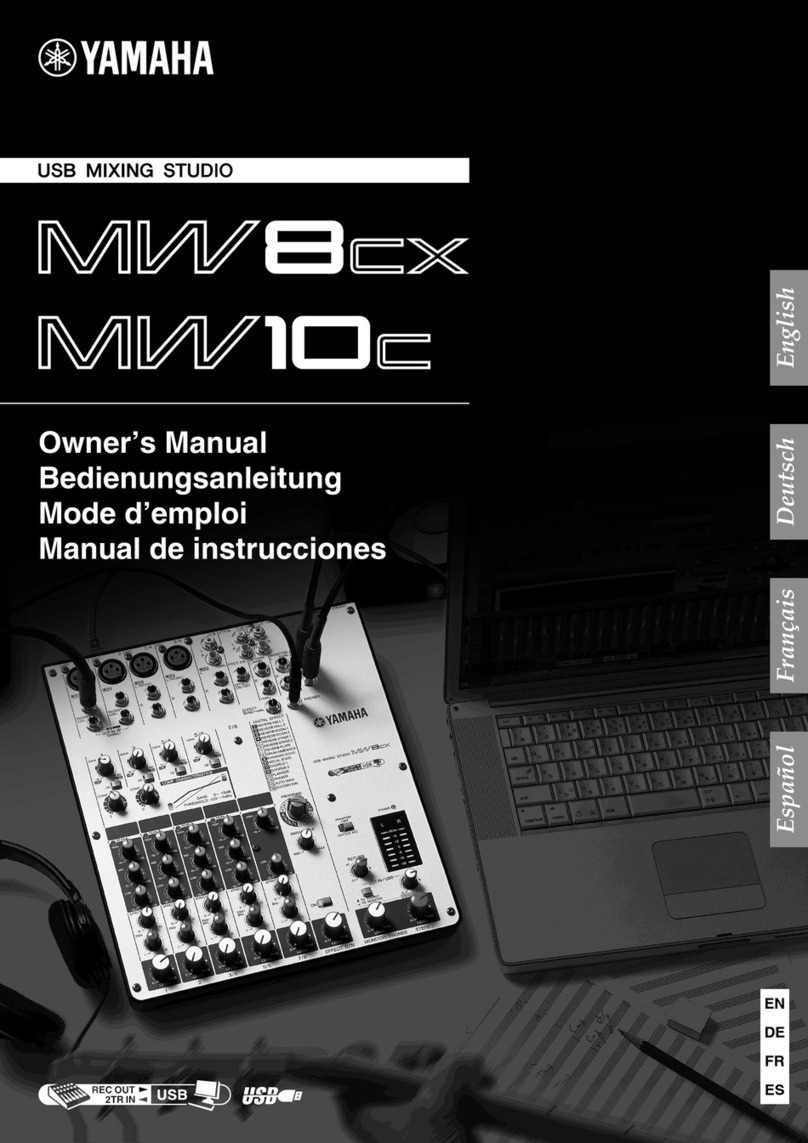
Yamaha
Yamaha MW8cx owner's manual
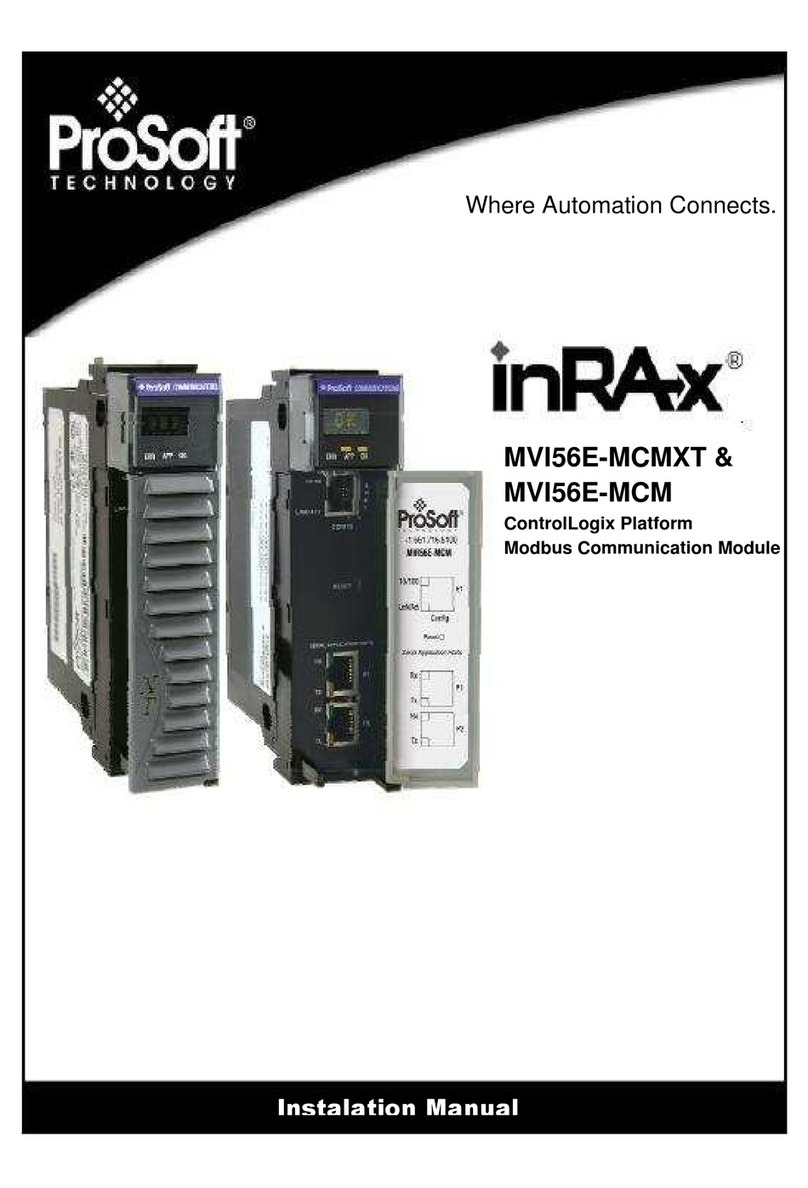
ProSoft Technology
ProSoft Technology MVI56E-MCMXT installation manual
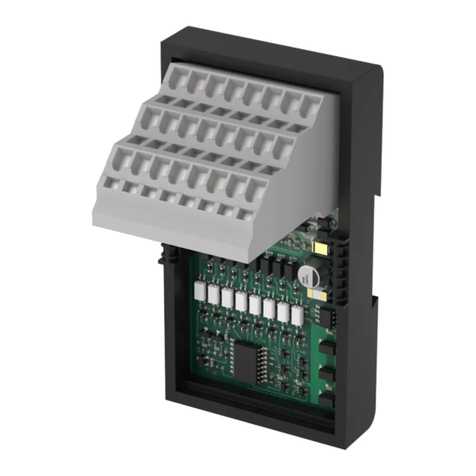
elobau
elobau 363 Series Translation of the original operating instructions

ZABKZ
ZABKZ PA2184B owner's manual
